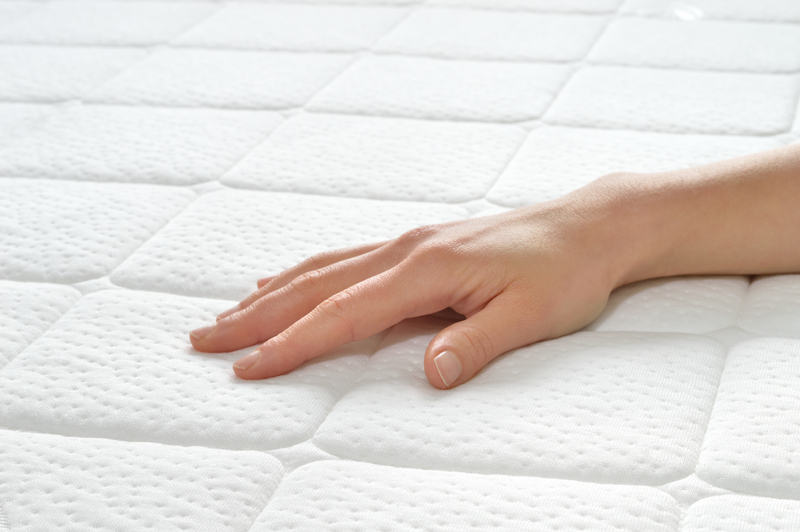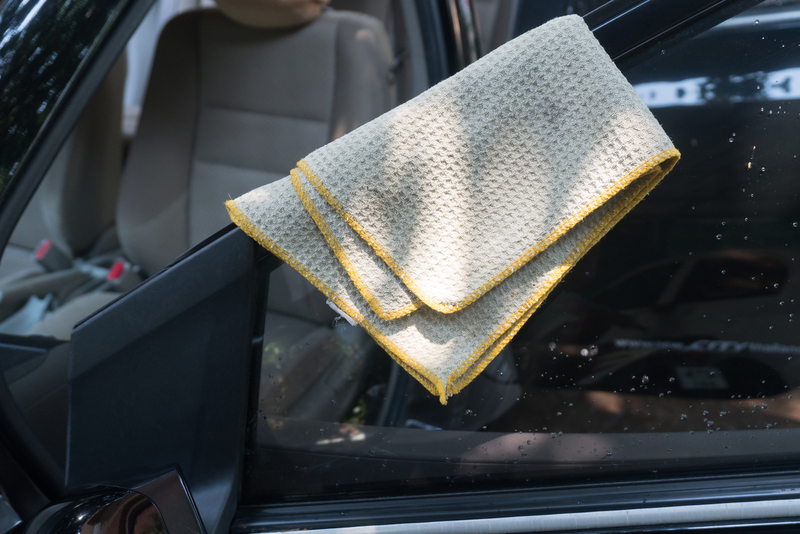Effective Strategies for Cleaning Mould on Sills
Posted on 16/09/2025
Effective Strategies for Cleaning Mould on Sills
Mould on sills is more than just an unsightly issue--it can damage your property and negatively impact your health. Whether it's window sills, door sills, or other surfaces, mould thrives in places where moisture collects. Understanding not only how to remove mould but how to prevent its return is essential for home and building maintenance. In this comprehensive guide, you'll discover effective strategies for cleaning mould on sills, including proven methods, the best products, and practical prevention tips.
Understanding the Dangers of Mould on Sills
If you notice black, green, or even pink discolouration along your sills, you may be dealing with a mould infestation. Mould releases spores that can cause allergic reactions, respiratory problems, and even long-term health issues, especially for those with compromised immune systems.
- Structural damage: Mould can deteriorate wooden and other porous sills, leading to costly repairs.
- Reduced indoor air quality: Airborne mould spores contribute to musty smells and can trigger asthma and allergies.
- Decreased property value: Persistent mould issues can lower your home's attractiveness to buyers.
Addressing mould as soon as it appears on sills is crucial not just for aesthetics, but for the safety and longevity of your home.

Signs That Indicate Mould on Sills
Before beginning any cleaning process, it's important to confirm the presence of mould. Recognizing the signs early makes removal more effective and prevents the spread to other areas.
- Dark or coloured specks or streaks on window or door sills
- A musty, damp odour near the affected area
- Visible growth that returns rapidly after being wiped away
- Peeling paint or soft spots on wooden sills
Why Mould Favors Sills
Most sills are situated in locations where condensation forms due to temperature differences inside and outside your home, like window sills. Combined with dust, organic matter, and hidden crevices, these conditions create the perfect environment for mould on sills to flourish.
Preparation for Cleaning Mould on Sills
Proper preparation is key to safely and effectively clean mould. Here are essential steps to take before starting the removal process:
- Protect yourself: Use gloves, safety goggles, and a mask to prevent exposure to mould spores.
- Ventilate the area: Open windows and doors to ensure good air flow. Use a fan to direct air out of the room if possible.
- Clear the area: Remove any curtains, blinds, or items sitting on or near sills.
Preparation minimizes your risk of spreading mould and safeguards your health during the cleaning process.
Top-Recommended Strategies for Cleaning Mould on Sills
There are several effective mould cleaning techniques for sills that cater to different materials and levels of infestation. Below are comprehensive methods you can use, from eco-friendly to chemical solutions.
1. Cleaning with Vinegar and Baking Soda
For most mild to moderate cases, white vinegar is an excellent mould killer. Its acidic nature breaks down mould hyphae and prevents regrowth.
- Step 1: Fill a spray bottle with undiluted white vinegar.
- Step 2: Spray the vinegar liberally over the mouldy sill area.
- Step 3: Allow the vinegar to sit for at least one hour.
- Step 4: Scrub the area with a brush or old toothbrush.
- Step 5: For stubborn patches, sprinkle baking soda onto the mould after spraying with vinegar and scrub again.
- Step 6: Wipe clean with a damp microfiber cloth.
Note: Baking soda not only acts as a gentle abrasive but also deodorizes and helps to absorb residual moisture, making it perfect for cleaning window sills with mould and similar surfaces.
2. Hydrogen Peroxide Solution
Hydrogen peroxide is another effective home remedy for cleaning mould on sills. It has anti-fungal and anti-bacterial properties and works well on porous and non-porous surfaces.
- Step 1: Pour 3% hydrogen peroxide into a spray bottle.
- Step 2: Spray directly onto the mouldy sill and leave for 10-15 minutes.
- Step 3: Scrub away the mould and wipe the area with a clean, wet cloth.
Hydrogen peroxide is particularly effective for removing mould from wooden sills, as it penetrates the grains without causing significant damage.
3. Specialized Mould Removers
For stubborn infestations or larger areas, you may want to use commercial mould removal sprays or gels. These are often formulated with bleach, ammonia, or proprietary fungicides.
- Step 1: Follow the manufacturer's instructions for application and safety.
- Step 2: Apply to the affected area and allow time for the product to work.
- Step 3: Scrub and rinse thoroughly to remove residue.
Pay special attention to warning labels, as many chemical-based cleaners require proper ventilation and protective gear. These products are ideal when other homemade remedies fail to remove persistent mould on sills.
4. Cleaning Painted and Sealed Sills
Painted or sealed sills--like those commonly found on uPVC windows--require gentle cleaning to avoid surface scratches.
- Use a mixture of warm water and mild dish soap for routine cleaning.
- For mould spots, use diluted white vinegar or a small amount of hydrogen peroxide.
- Avoid abrasive pads or harsh chemicals that could damage the finish.
Always dry the sill thoroughly to prevent more mould from forming.
Preventing Mould Growth on Sills
Once you've cleaned up the mould, it's crucial to implement strategies that discourage its return. Prevention is always easier than removal, and a few simple steps can greatly reduce mould risk.
- Reduce humidity: Use dehumidifiers in problem areas, especially during wet seasons.
- Improve ventilation: Install or use extractor fans in kitchens and bathrooms. Open windows regularly to allow fresh air in.
- Keep sills dry: Wipe up condensation quickly, especially after showers, heavy rain, or cooking.
- Repair leaks: Check for and fix leaking windows, seals, or roofs promptly.
- Regular cleaning: Dust and clean sills as part of your routine home maintenance to prevent the accumulation of organic debris that can feed mould.
Choosing the Right Materials for Sills
If you are renovating, consider using water-resistant and mould-resistant materials for sills. Materials like treated wood, PVC, and composite materials are less likely to support mould growth.
When to Call the Professionals
While many cases of mould on sills can be addressed by homeowners, there are situations when professional remediation is necessary. You should contact mould removal experts if:
- The area of mould exceeds one square metre (10 square feet).
- You suspect mould has penetrated deep inside walls or structural elements.
- There are signs of toxic black mould (Stachybotrys chartarum)--characterized by a slimy texture and dark green/black appearance.
- Your DIY efforts do not keep mould from recurring.
Professionals use specialized equipment to detect hidden mould and ensure complete, safe removal, protecting your home and health.
Frequently Asked Questions about Cleaning Mould on Sills
What is the safest method for removing mould from window sills?
For most households, using white vinegar or hydrogen peroxide is both safe and effective. Always wear gloves and a mask to avoid inhaling mould spores.
How often should I clean my sills to prevent mould?
Regularly inspect and clean your sills once a month, more often in damp seasons or if condensation is present.
Is bleach necessary for cleaning mould on sills?
Bleach can kill mould on non-porous surfaces, but vinegar and peroxide are safer for home use and work well on both porous and non-porous materials. Bleach is not recommended for wooden sills, as it does not penetrate deeply and may only mask surface stains.
Can I paint over mouldy sills?
Never paint over active mould. Cleaning and completely removing the mould is essential before any painting. Otherwise, mould will continue to grow beneath the paint and can eventually reappear.

Mistakes to Avoid When Cleaning Mould on Sills
Successful mould removal depends on avoiding common pitfalls such as:
- Using only water: Water alone can spread mould spores and support continued growth.
- Failing to dry the area: Moisture left behind after cleaning promotes regrowth.
- Ignoring the source of moisture: Without addressing leaks and condensation, mould is likely to return.
- Skimping on protective gear: Inhaling or touching mould can have health consequences. Always use gloves and a mask.
Careful attention to detail during and after cleaning is the key to long-term success in removing mould from sills.
Conclusion: Keep Your Home Healthy with Proper Mould Removal Tactics
Mould on sills is a concern that requires prompt attention. With the effective strategies for cleaning mould on sills discussed above, you can tackle even stubborn mould stains while protecting your health and property. Remember, regular upkeep and attention to moisture problems are the foundation of prevention.
From natural cleaning solutions to targeted chemical treatments, and from routine maintenance to calling in the experts when needed, you now have a comprehensive toolkit for dealing with mould on window sills and other surfaces in your home. Start a regular cleaning and inspection routine today, and enjoy peace of mind knowing your home is healthier, safer, and free from the dangers of unwanted mould growth.





